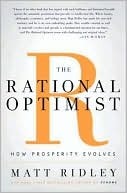In 2004, a series of volunteer undergraduates sat down at computer screens at George Mason University in Virginia to play games for money. In the game each person found himself in a virtual village with his own house and field in which he could produce and consume red and blue virtual ‘units’ during brief sessions of the game. In each case, he knew that the more he acquired and the closer he got to a certain ratio of blue and red units (e.g., 3:1) the more real money he went home with. But unknown to him, he was either an ‘odd’ player, who was programmed to be faster at making red units, or an
...more
Welcome back. Just a moment while we sign you in to your Goodreads account.


